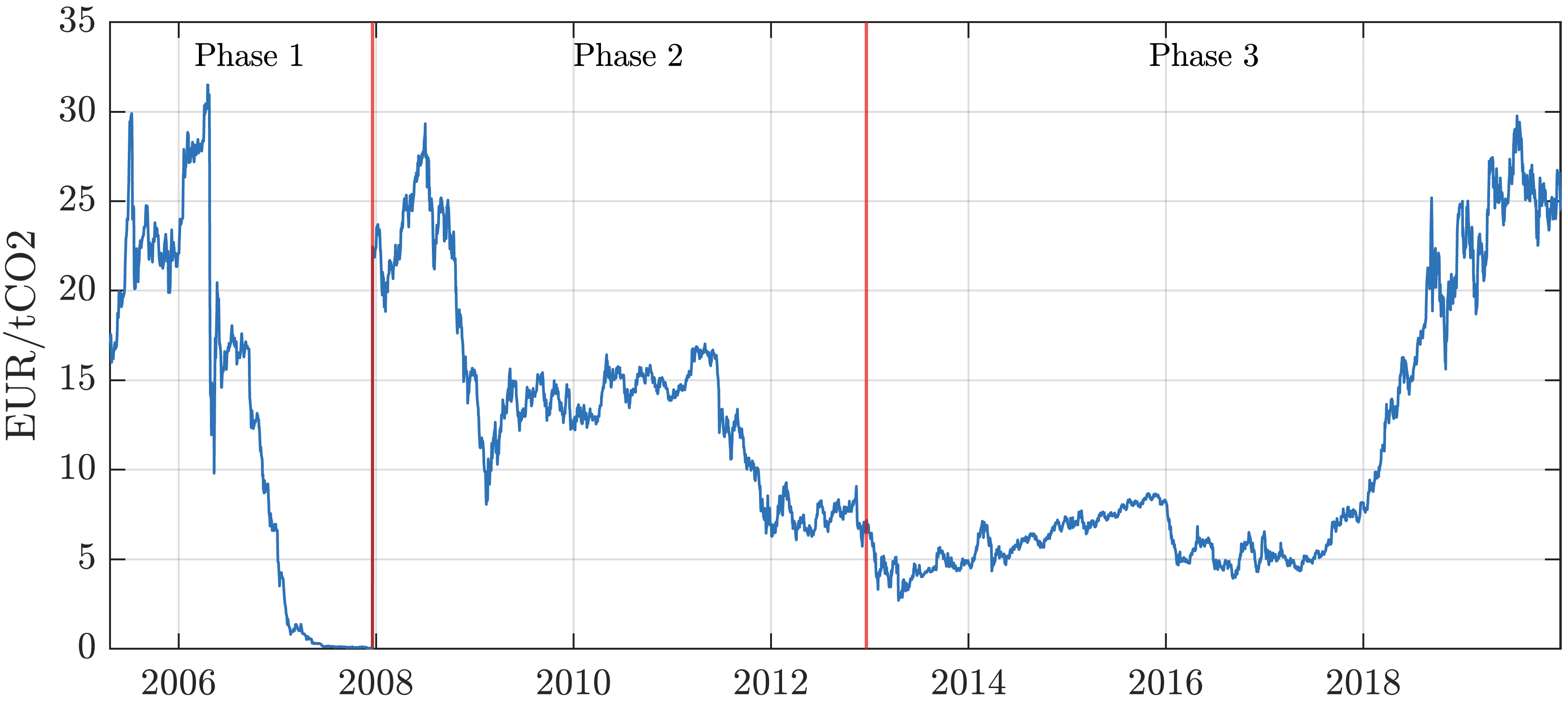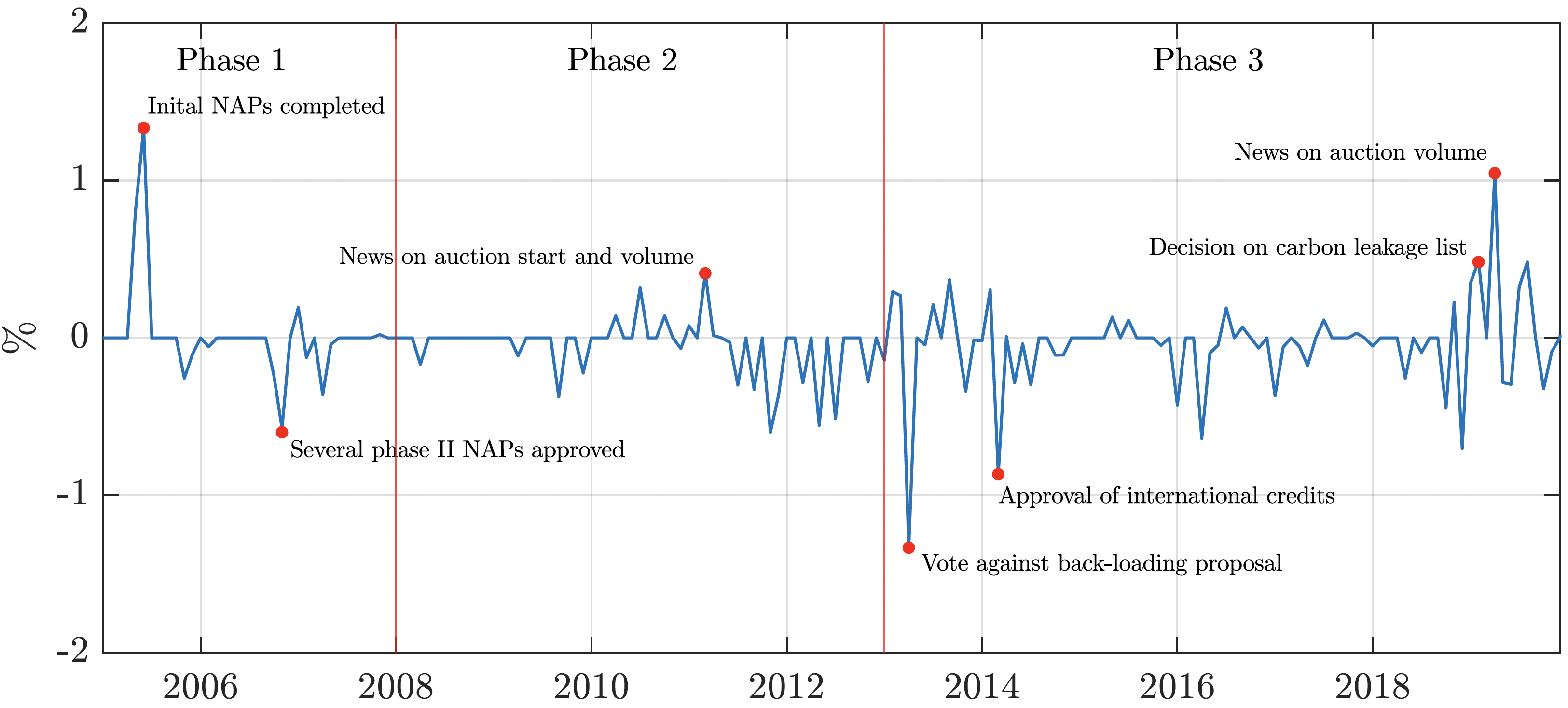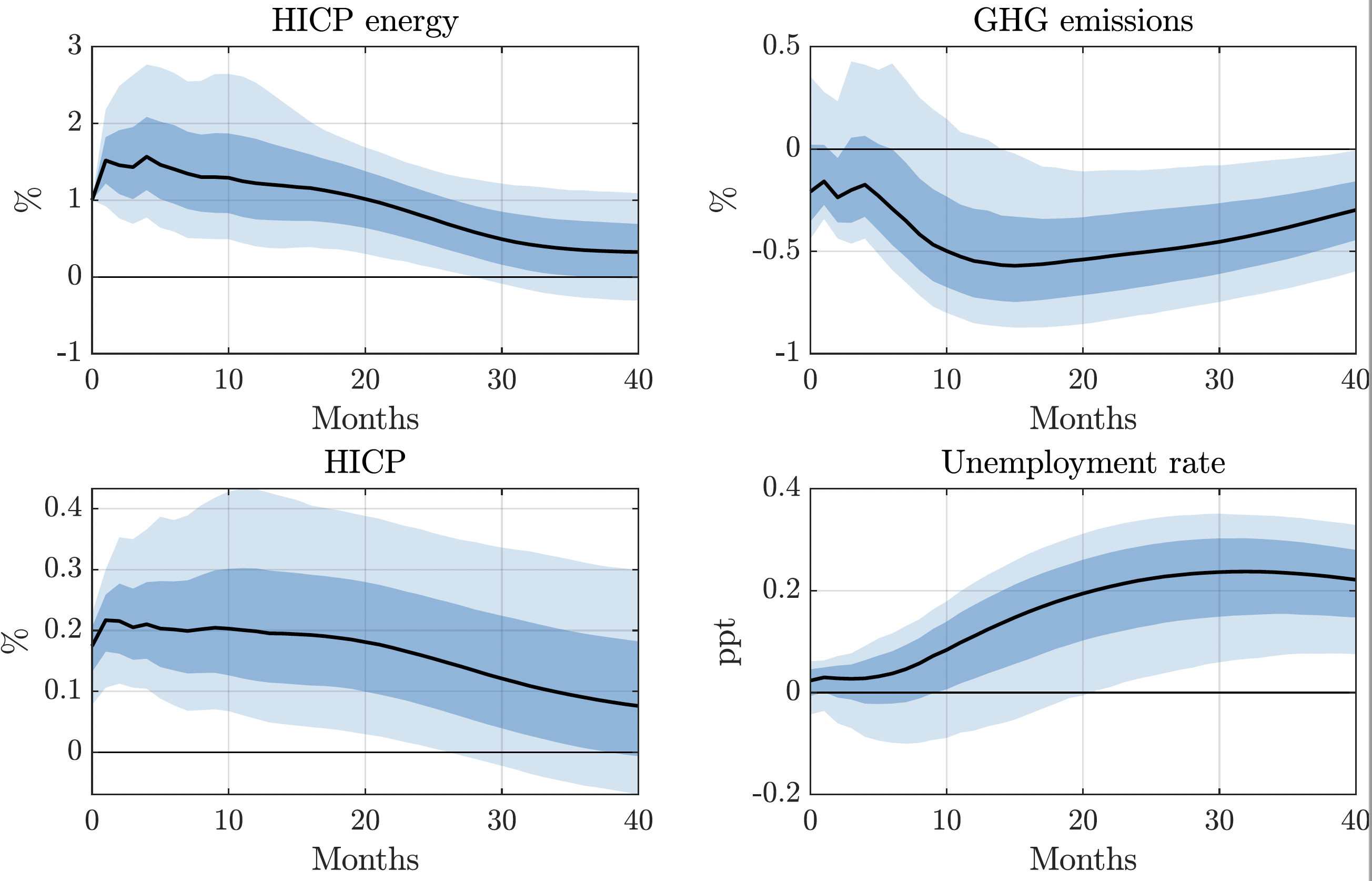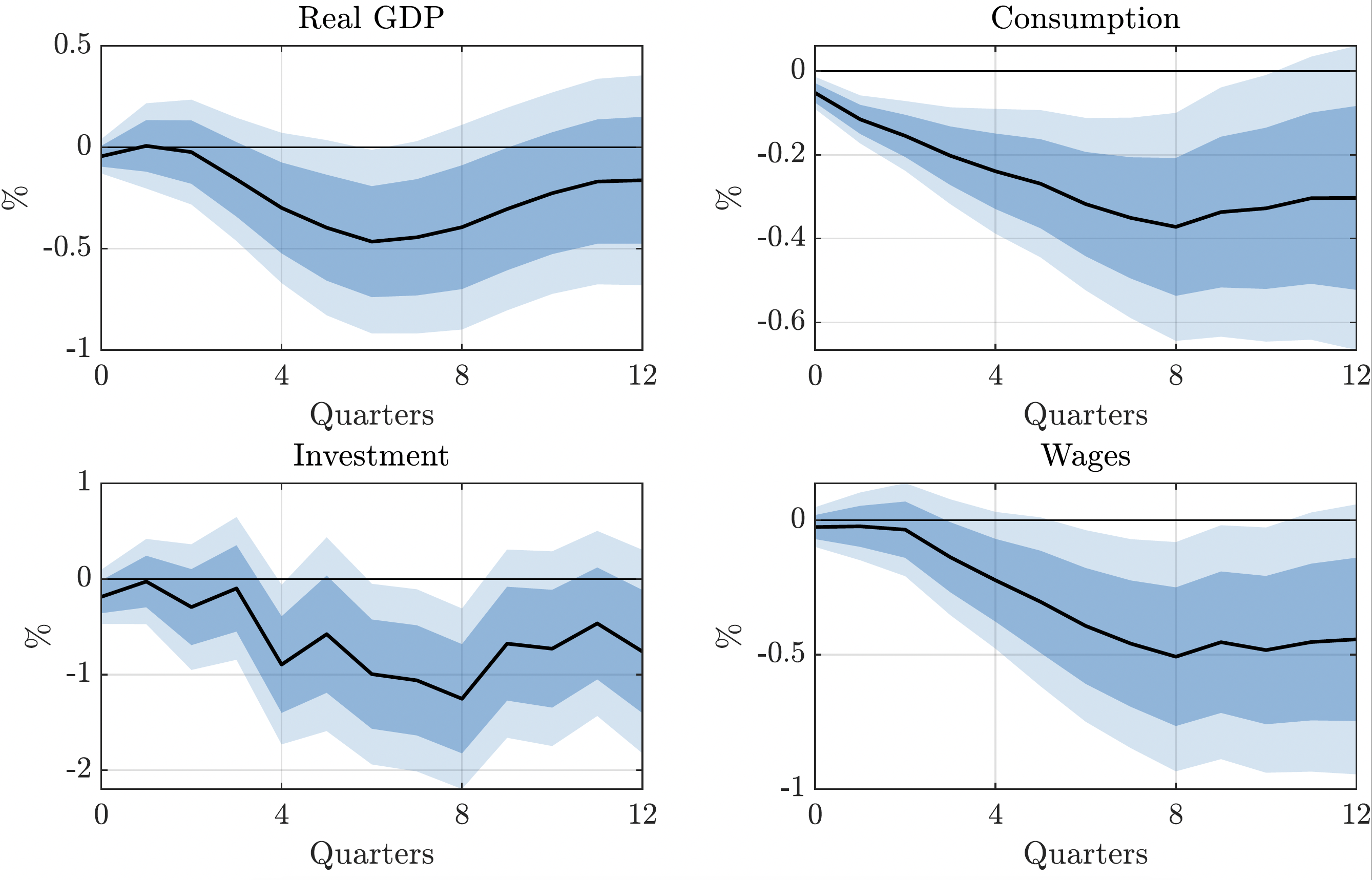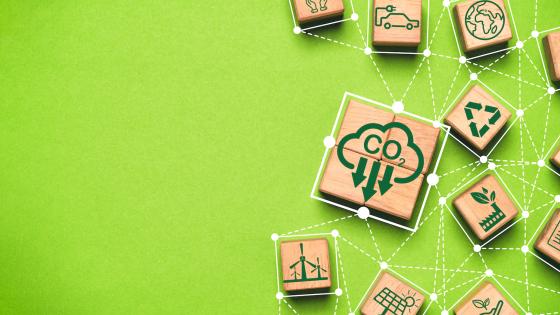The looming climate crisis has put climate change at the top of the global policy agenda. However, despite the substantial threats to our lives, livelihoods, and the environment, fighting climate change has proved to be very difficult. A key challenge that policymakers face are the distributional implications of the climate transition. If the costs of greening the economy are perceived to be unfairly distributed, this could undermine the success of the transition. A case in point is Switzerland, where a referendum on a new CO2 law was narrowly rejected in 2021. One of the key concerns among voters were the rising costs for households that would have come with the new policy (Hausammann and Reich 2022). Against this backdrop, it is crucial to better understand the distributional effects of climate policy.
A key transmission channel of carbon pricing policies operates through higher energy prices (Fabra and Reguant 2014). Because energy demand is relatively inelastic, at least in the short term, this reduces the disposable income of households available for expenditures other than energy. As poorer households tend to spend a larger share of their budget on energy and energy-related products, they will be disproportionately affected. However, higher energy prices also affect the economy indirectly through second-round effects via prices and wages and hence income and employment. These indirect effects may also be borne unequally across society.
Identifying carbon policy surprises
In a recent study (Känzig 2023), I revisit the distributional impacts of carbon pricing using data from the European Emissions Trading Scheme (ETS) – the largest carbon market in the world. This market provides a unique setting to study the causal effects of carbon prices on the economy, by leveraging institutional features of the market in combination with high-frequency financial data. Identifying these effects is a challenging problem because the observed carbon price is driven by demand and supply in the market. However, by measuring carbon price changes in a tight window around regulatory policy events concerning the supply of emission allowances, one can isolate some variation in the price that is plausibly exogenous and driven by the policy news. Figure 1 shows the evolution of the carbon price and the identified carbon policy surprises. Using the carbon policy surprises as an instrument allows me to identify the dynamic causal effects of a structural carbon policy shock.
Figure 1 The EU carbon price and carbon policy surprises
A) EU carbon price
B) Carbon policy surprises
Notes: This figure shows the carbon price (in EUR/tCO) and the carbon policy surprise series, constructed as the change of the EUA futures price around regulatory policy events concerning the supply of EU emission allowances relative to the prevailing wholesale electricity price.
Aggregate effects and distributional implications
Figure 2 shows the impulse responses to a carbon policy shock. We can see that carbon pricing leads to a significant increase in energy prices, a persistent fall in emissions and an increase in green innovation. However, this does not come without a cost. Economic activity falls, at least temporarily, and consumer prices increase quite persistently. The labour market effects turn out to be particularly pronounced, as can be seen by the significant increase in unemployment and the fall in wages. Thus, while carbon pricing is successful at reducing emissions by increasing the cost of polluting, there are non-negligible unintended economic consequences.
Figure 2 The aggregate effects
A) Impulse responses at monthly frequency
B) Impulse responses at quarterly frequency
Notes: Impulse responses to a carbon policy shock, normalised to increase the HICP energy by 1% on impact. The solid line is the point estimate and the dark and light shaded areas are 68% and 90% confidence bands, respectively.
Importantly, these economic costs are not borne equally across society. As can be seen from Figure 3, low-income households lower their consumption significantly and persistently while richer households are much less affected. Poorer households are more severely affected in two ways. First, they spend a larger share of their disposable income on energy and thus the higher energy bill leaves significantly fewer resources for other expenditures. Second, they experience a stronger fall in income, as they tend to work in sectors that are more impacted by the policy. Interestingly, these are not the sectors with the highest energy intensity but sectors that are more sensitive to changes in demand, producing more discretionary goods and services. Crucially, the magnitudes of the expenditure responses are larger than what can be accounted for by the direct effect through energy prices alone. This points to an important role of indirect, general equilibrium effects via income and employment. Based on my estimates, indirect effects can account for about two-thirds of the total effect on consumption.
Figure 3 The distributional implications
Notes: Impulse responses of total expenditure (excluding housing) and current total disposable household income for low-income (bottom 25%), middle-income (middle 50%) and high-income households (top 25%) to carbon policy shock. The households are grouped by total normal disposable income and the responses are computed based on the median of the respective group.
Redistributing carbon revenues
My results suggest that the indirect effects via households’ income and employment are quantitatively more important than the direct price effects. This is also important to gauge the distributional impact of the policy. Solely focusing on the direct effects via higher energy prices can massively understate the actual regressive impact of the policy. Importantly, the distributional impacts do not only lead to increased inequality, they also matter for the aggregate effects of the policy. This is a crucial difference to earlier work, which has abstracted from feedback effects between the aggregate economy and inequality (e.g. Goulder et al. 2019).
A key policy implication of these findings is that targeted fiscal policy can reduce the economic cost of carbon pricing. To the extent that energy demand is inelastic, which turns out to be particularly the case for low-income households, this should not compromise emission reductions. This intuition is confirmed in a climate-economy model with nominal rigidities and heterogeneity in households’ energy expenditure shares, income incidence, and marginal propensities to consume. Calibrated using micro and macro data, the model is successful in matching the observed empirical responses to carbon policy. Based on this model, I show that redistributing carbon revenues to the most affected households can mitigate the aggregate effect on consumption and reduce inequality, without compromising the reductions in emissions. This is consistent with prima facie evidence from the British Columbia carbon tax, where Konradt and Weder di Mauro (2023) document that the progressive redistribution scheme associated with the tax has been successful at alleviating the economic consequences of the policy.
Outlook and conclusion
Carbon pricing is successful at reducing emissions and fostering green innovation but comes with unintended economic and distributional consequences. Leaving these effects unhinged may ultimately undermine the public support of the policy. This is particularly relevant in the current context with high carbon and energy prices. Indeed, I also provide some suggestive evidence that carbon pricing leads to a fall in the support of climate-related policies that is particularly pronounced among low-income households who are more affected by the policy. Thus, in order to organise a successful transition to a green economy, it is crucial for policymakers to take the distributional impacts – both direct and indirect – into account, and compensate the losers of the transition accordingly.
References
Fabra, N and M Reguant (2014), "Pass-through of emissions costs in electricity markets", American Economic Review 104(9): 2872-99.
Goulder, L H, M AC Hafstead, G Kim and X Long (2019), "Impacts of a carbon tax across US household income groups: What are the equity-efficiency trade-offs?", Journal of Public Economics 175: 44-64.
Hausammann, F and J Reich (2022), "Switzerland–2020 and 2021 Review of Environmental Law: Federal CO2-Act, Bilateral Treaties on ITMOs, and Climate Change Litigation", Bilateral Treaties on ITMOs, and Climate Change Litigation.
Känzig, D R (2023), “The unequal economic consequences of carbon pricing”, NBER Working Paper No. w31221.
Konradt, M and B Weder di Mauro (2023), "Carbon taxation and greenflation: Evidence from Europe and Canada", Journal of the European Economic Association.

